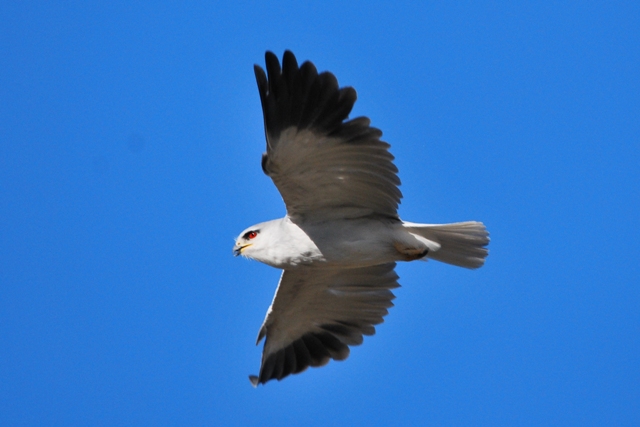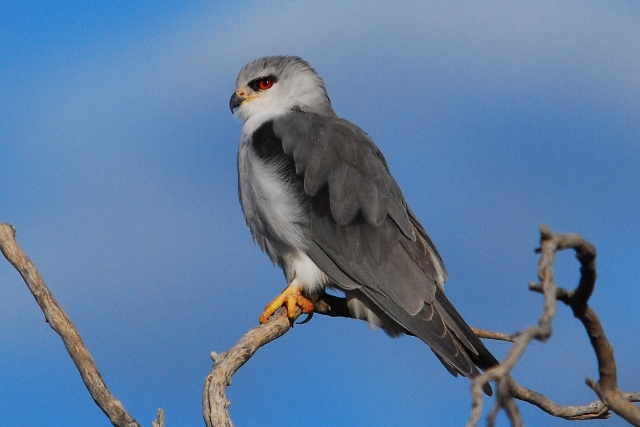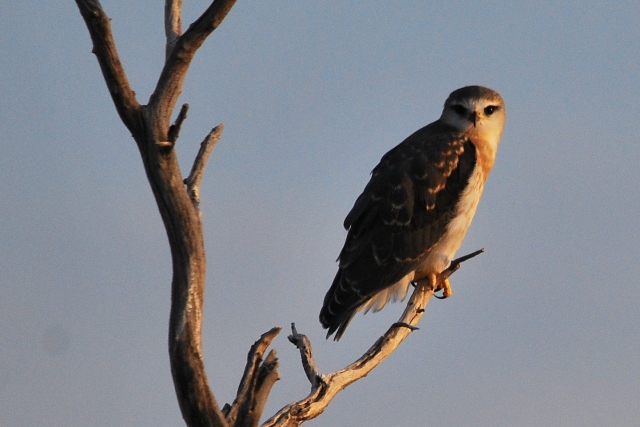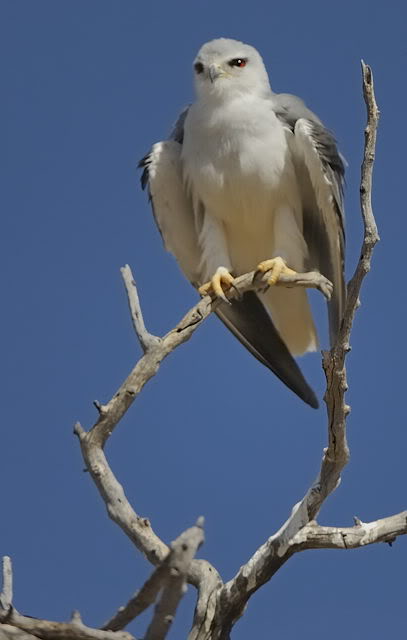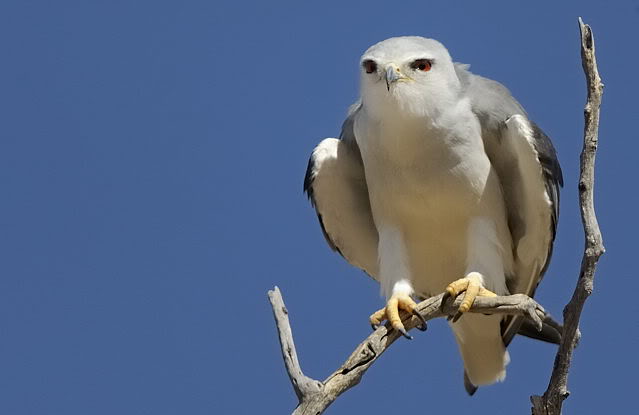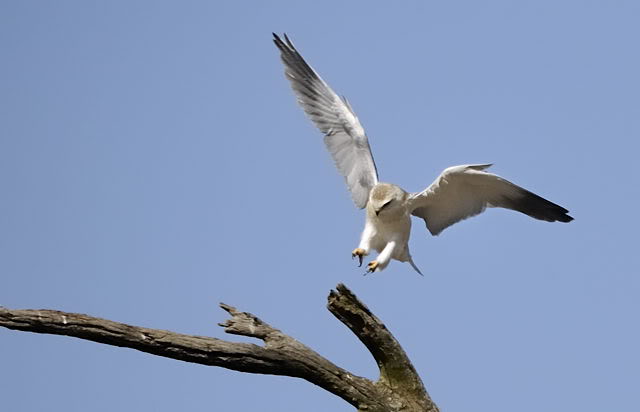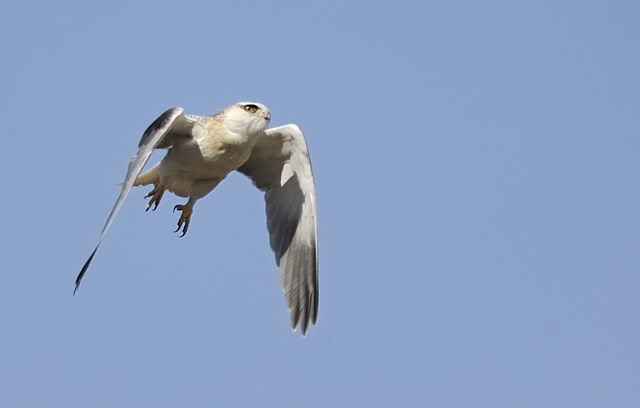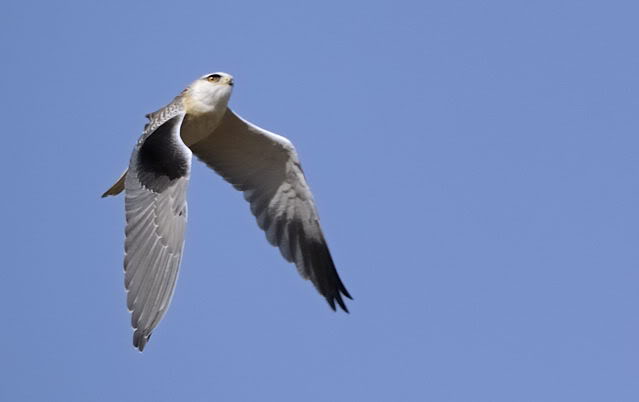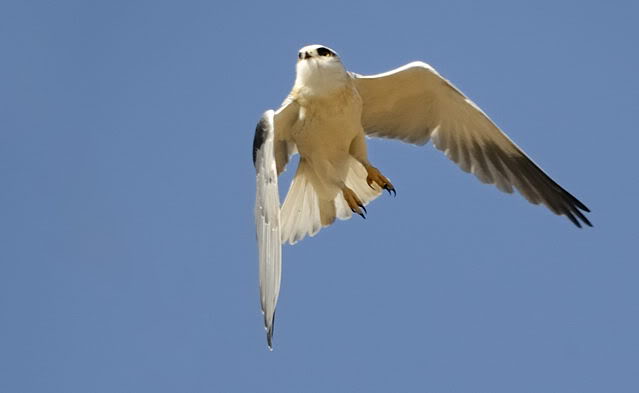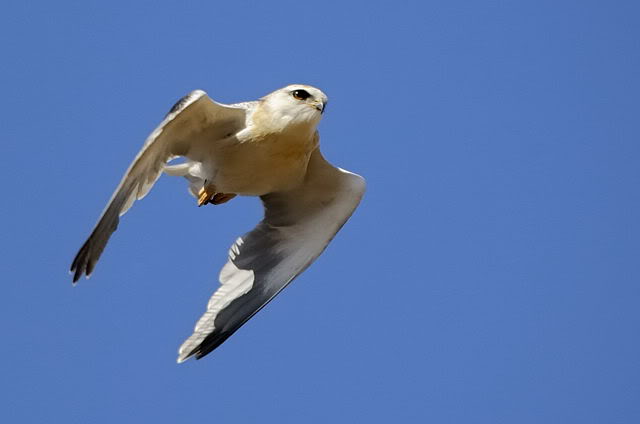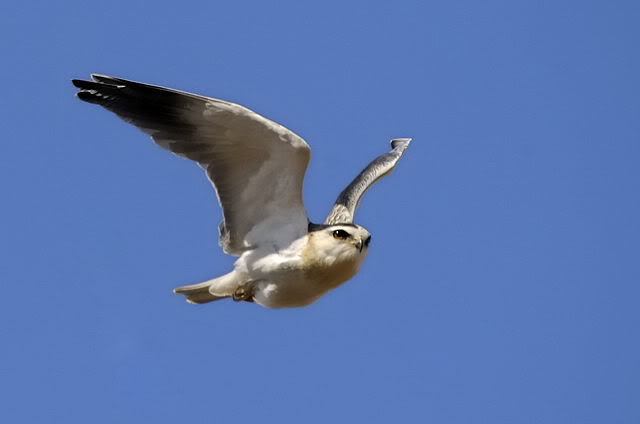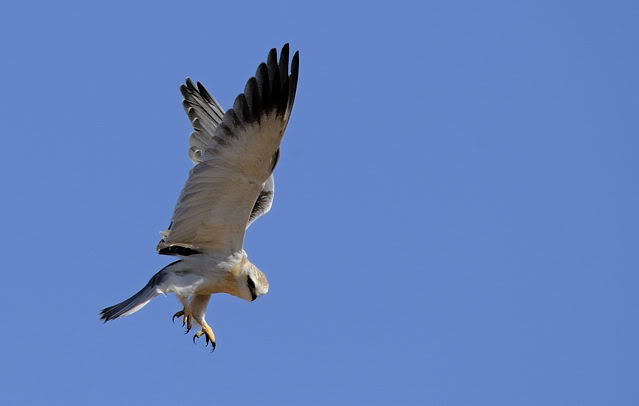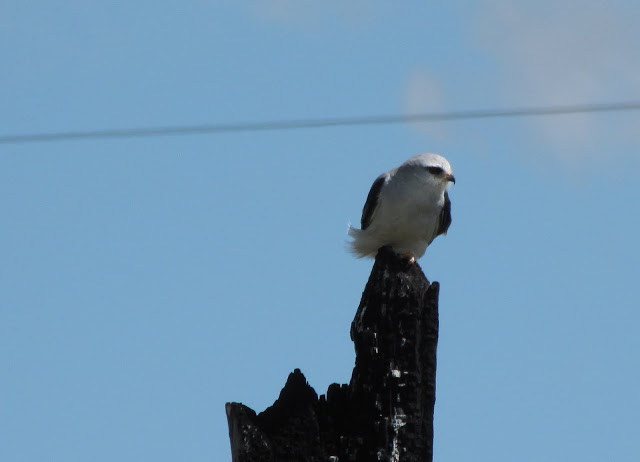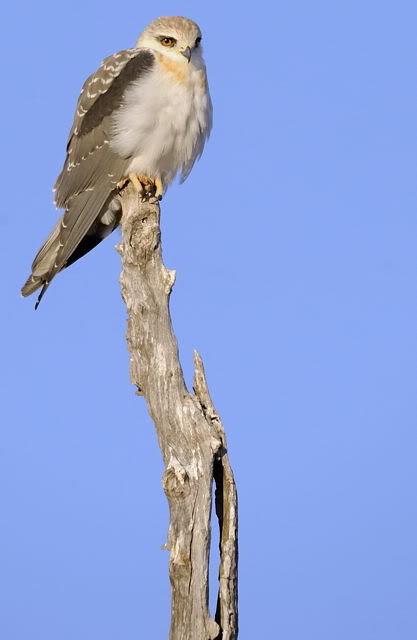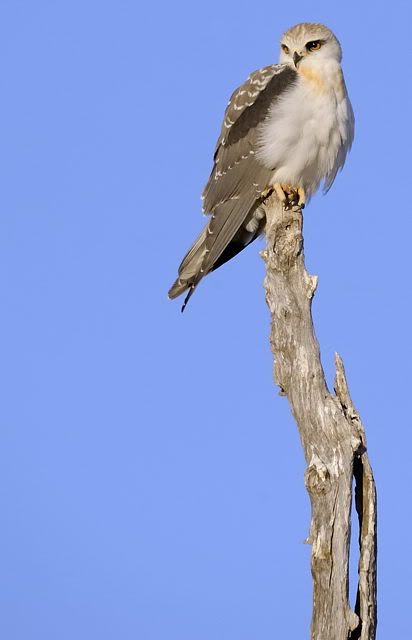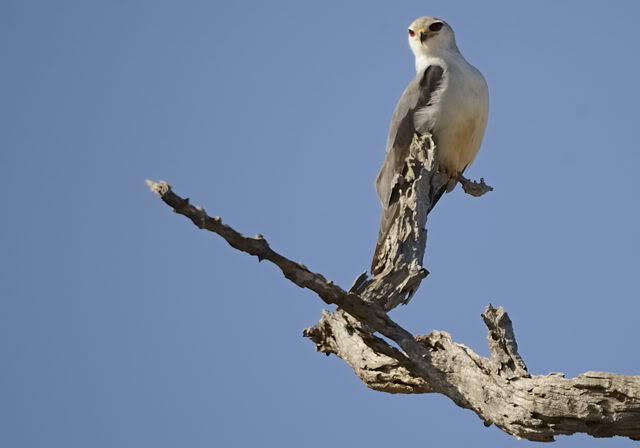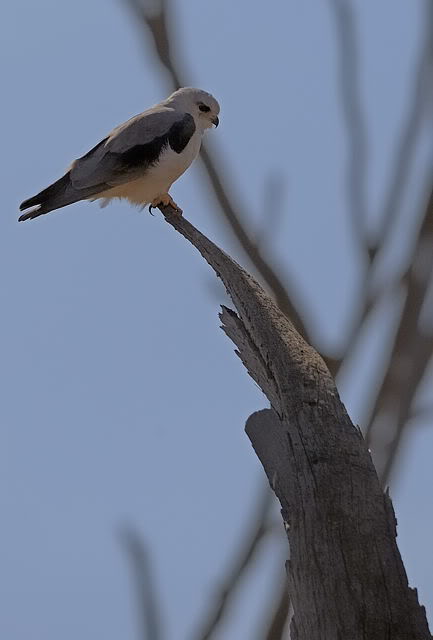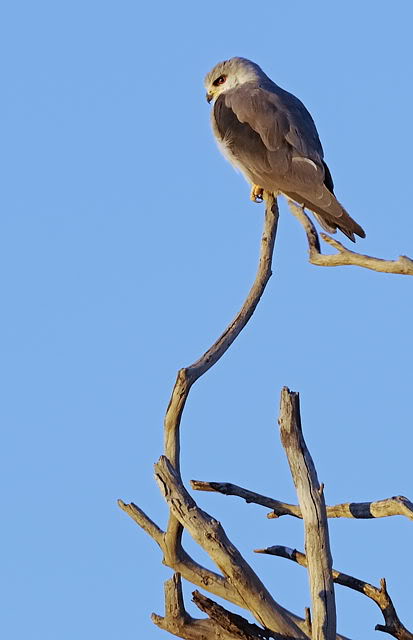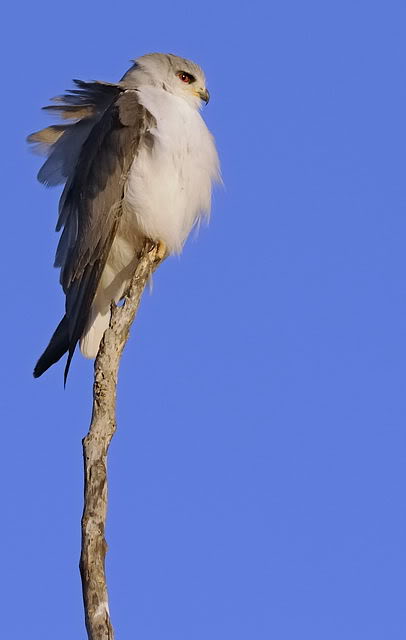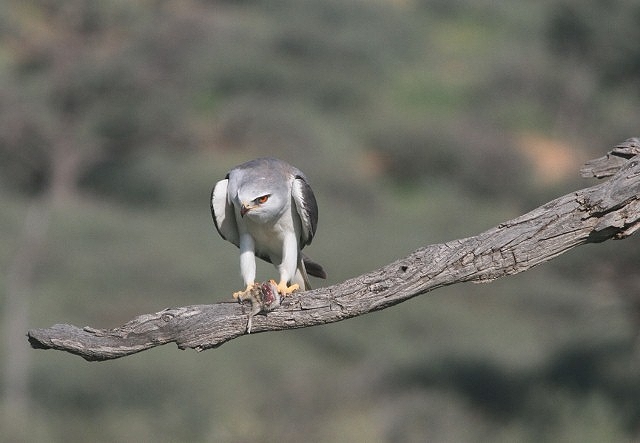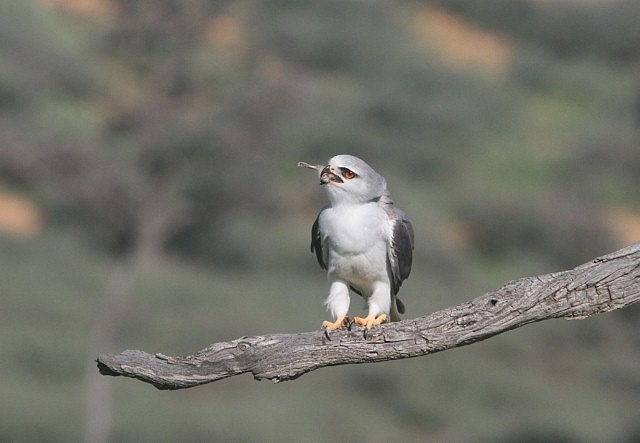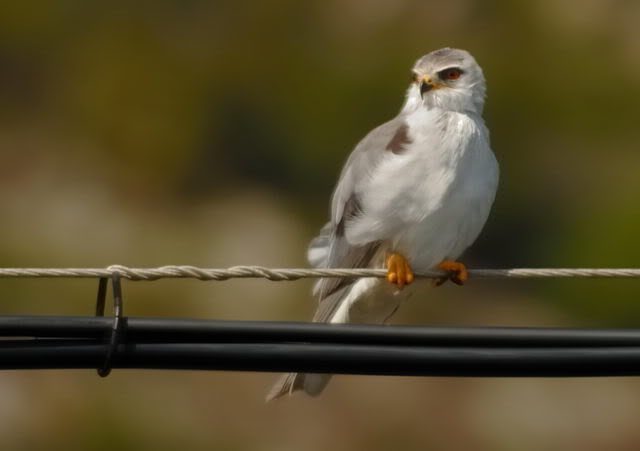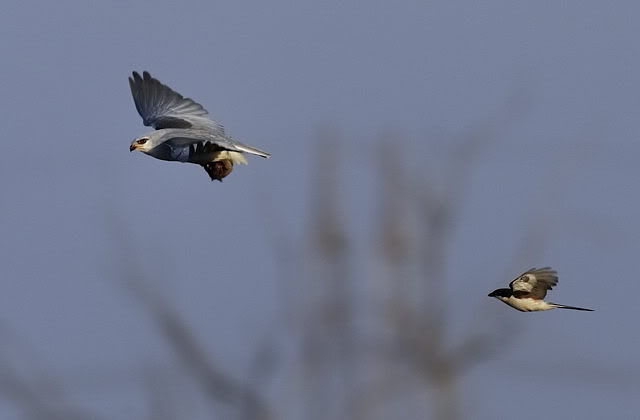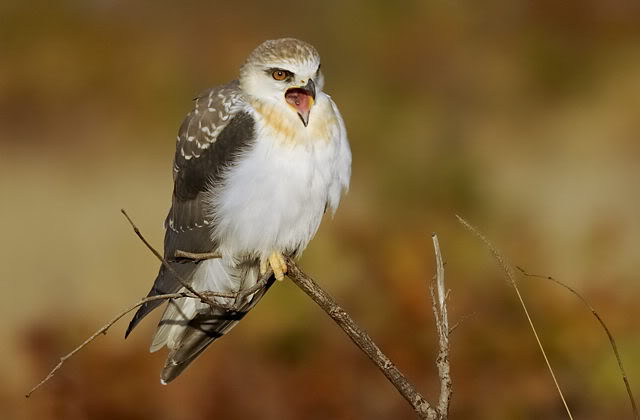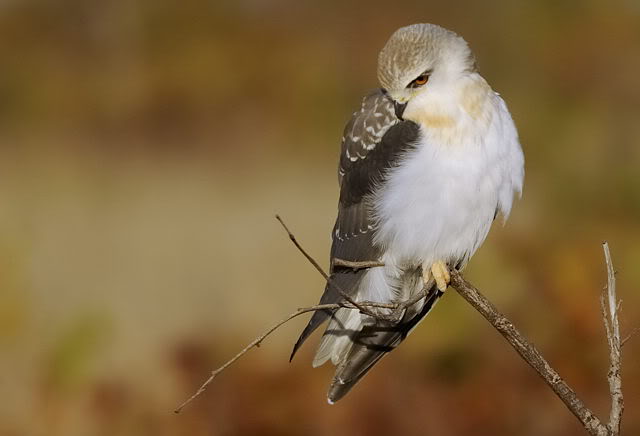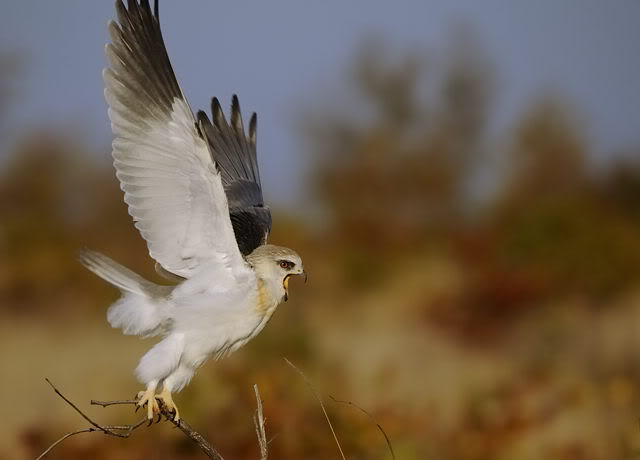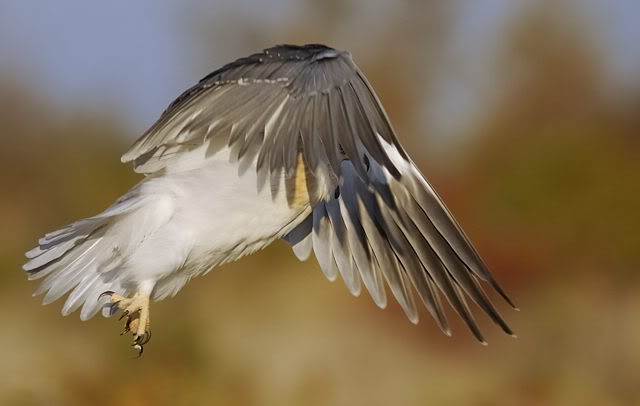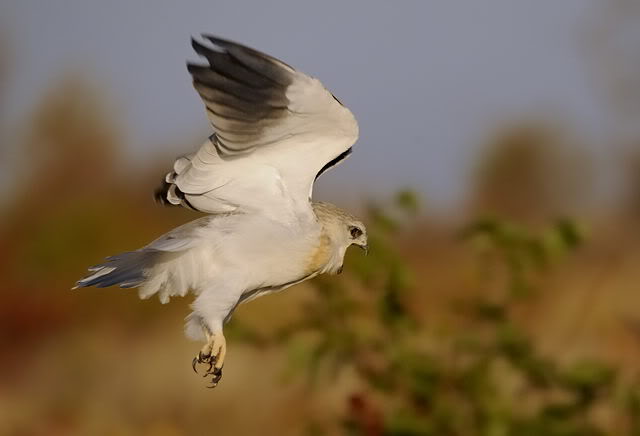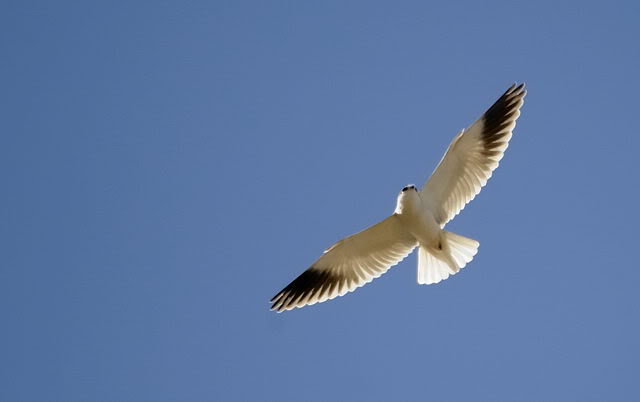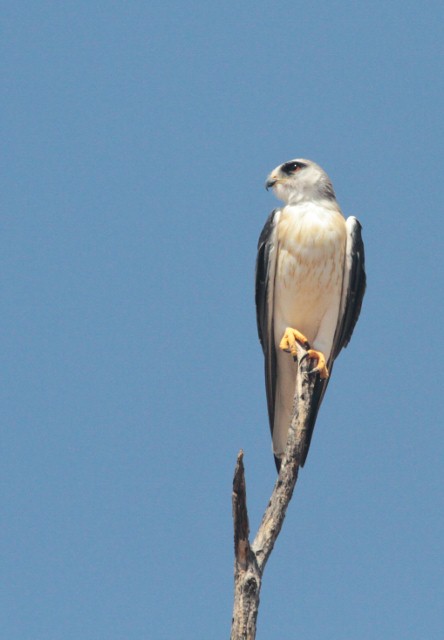Black-winged Kite (formerly: Black-shouldered Kite) Elanus caeruleus
Posted: Thu May 24, 2012 11:20 pm
Black-winged Kite
Distribution and Habitat
The Black-winged Kite is one of the most common of the raptors in most of the region, at home in grasslands, woodlands and semi-arid areas, avoiding only the extremely dry areas and the forested areas. Its range is extensive, and these little raptors are found throughout Africa south of the Sahara, as well as parts of Asia, and its range may well be extending.
Description
Quite small for a raptor, with a length of around 30 cm, it is pale grey above and white below, with a black patch on the upperwing. The legs and feet are yellow; the bill black and the eyes red. The forward-facing eyes and soft plumage is somewhat owl-like. Sexes are alike in plumage, with the female being slightly larger than the male.
Feeding
They very often hunt from telephone poles or other convenient perches, or may hover, very much like a kestrel, over open ground from where they descend quickly when prey is spotted. Food is mainly small rodents, grasshoppers, lizards and small birds.
Breeding
The nest of the monogamous Black-winged Kite is a small platform of sticks, usually lined with grass and typically located near the top of a thorn tree, just below the canopy. The female lays a clutch of three or four cream-coloured eggs that are spotted with red, and which hatch after an incubation period of about 31 days.
Distribution and Habitat
The Black-winged Kite is one of the most common of the raptors in most of the region, at home in grasslands, woodlands and semi-arid areas, avoiding only the extremely dry areas and the forested areas. Its range is extensive, and these little raptors are found throughout Africa south of the Sahara, as well as parts of Asia, and its range may well be extending.
Description
Quite small for a raptor, with a length of around 30 cm, it is pale grey above and white below, with a black patch on the upperwing. The legs and feet are yellow; the bill black and the eyes red. The forward-facing eyes and soft plumage is somewhat owl-like. Sexes are alike in plumage, with the female being slightly larger than the male.
Feeding
They very often hunt from telephone poles or other convenient perches, or may hover, very much like a kestrel, over open ground from where they descend quickly when prey is spotted. Food is mainly small rodents, grasshoppers, lizards and small birds.
Breeding
The nest of the monogamous Black-winged Kite is a small platform of sticks, usually lined with grass and typically located near the top of a thorn tree, just below the canopy. The female lays a clutch of three or four cream-coloured eggs that are spotted with red, and which hatch after an incubation period of about 31 days.
